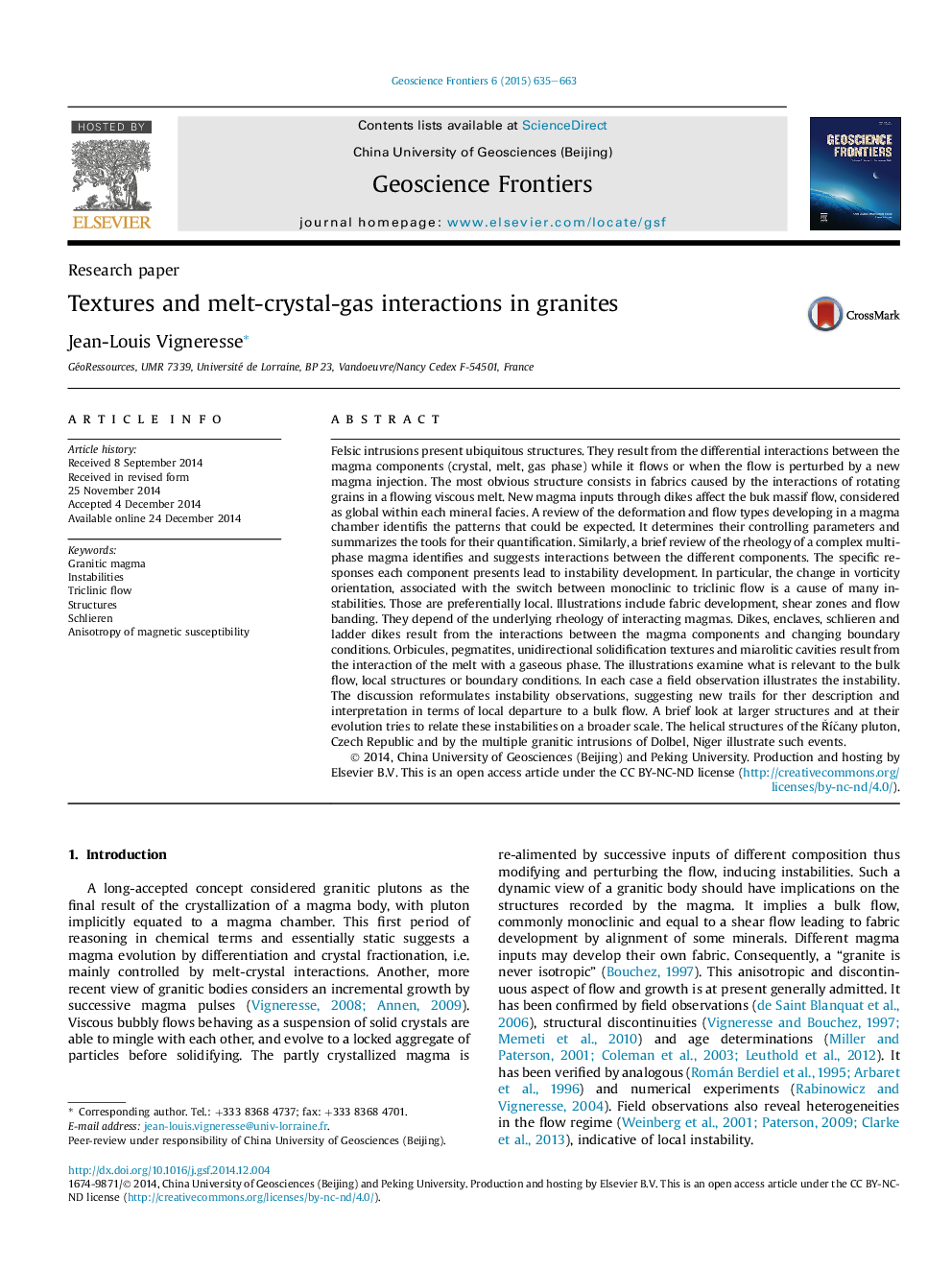| Article ID | Journal | Published Year | Pages | File Type |
|---|---|---|---|---|
| 4681566 | Geoscience Frontiers | 2015 | 29 Pages |
•Reviewing structures in a magmatic flow.•Types of flow monoclinic versus triclinic.•Tools for structural studies (anisotropy of magnetic susceptibility, strain estimates).•Rheology of the melt, matrix, gas phase and interactions.•Examples of instability.
Felsic intrusions present ubiquitous structures. They result from the differential interactions between the magma components (crystal, melt, gas phase) while it flows or when the flow is perturbed by a new magma injection. The most obvious structure consists in fabrics caused by the interactions of rotating grains in a flowing viscous melt. New magma inputs through dikes affect the buk massif flow, considered as global within each mineral facies. A review of the deformation and flow types developing in a magma chamber identifis the patterns that could be expected. It determines their controlling parameters and summarizes the tools for their quantification. Similarly, a brief review of the rheology of a complex multi-phase magma identifies and suggests interactions between the different components. The specific responses each component presents lead to instability development. In particular, the change in vorticity orientation, associated with the switch between monoclinic to triclinic flow is a cause of many instabilities. Those are preferentially local. Illustrations include fabric development, shear zones and flow banding. They depend of the underlying rheology of interacting magmas. Dikes, enclaves, schlieren and ladder dikes result from the interactions between the magma components and changing boundary conditions. Orbicules, pegmatites, unidirectional solidification textures and miarolitic cavities result from the interaction of the melt with a gaseous phase. The illustrations examine what is relevant to the bulk flow, local structures or boundary conditions. In each case a field observation illustrates the instability. The discussion reformulates instability observations, suggesting new trails for ther description and interpretation in terms of local departure to a bulk flow. A brief look at larger structures and at their evolution tries to relate these instabilities on a broader scale. The helical structures of the Říčany pluton, Czech Republic and by the multiple granitic intrusions of Dolbel, Niger illustrate such events.
Graphical abstractFigure optionsDownload full-size imageDownload as PowerPoint slide
